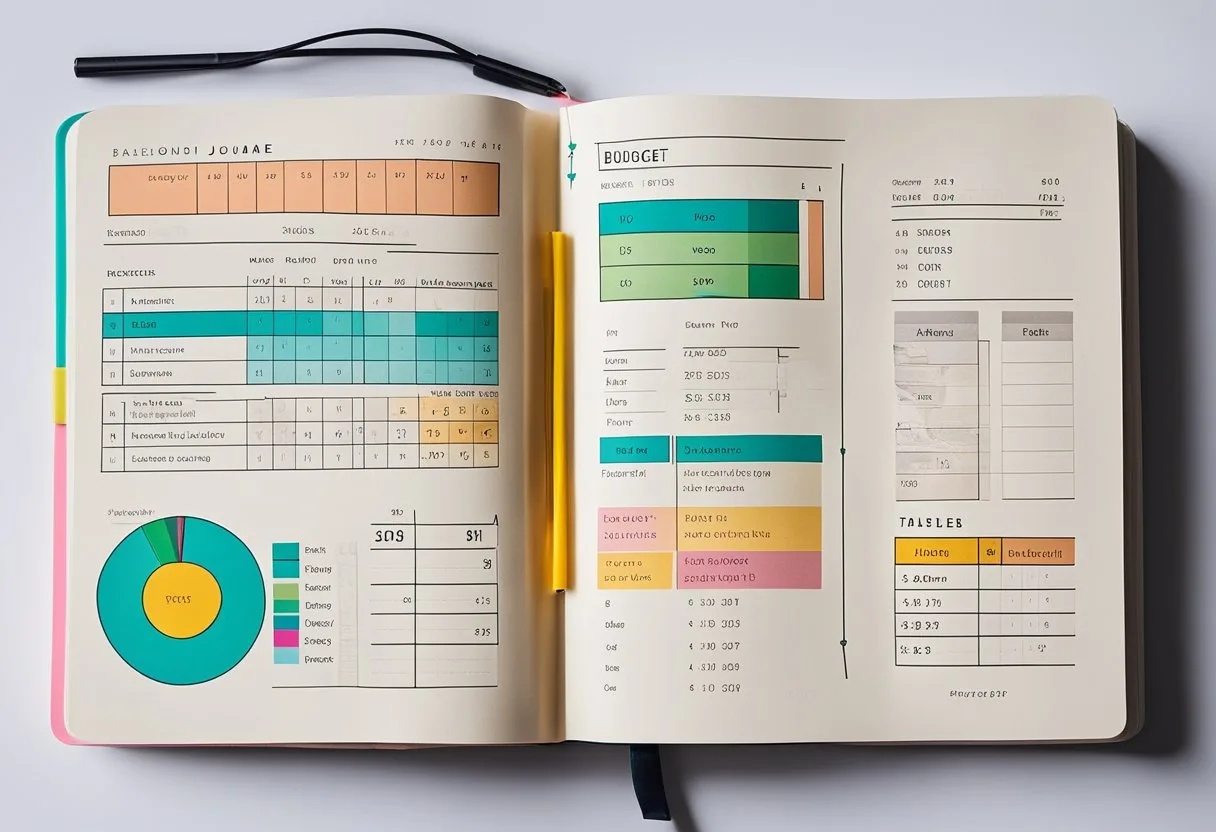Bullet journaling is a popular method of organization that can be especially helpful for individuals with ADHD. By combining journaling, planning, and task management into one system, bullet journaling can help individuals with ADHD stay on top of their responsibilities and reduce feelings of overwhelm. In this blog post, I will walk you through how to bullet journal for adhd to help you stay focused and keep track of your work and chores.
One of the key benefits of bullet journaling for ADHD is its flexibility. Unlike pre-made planners or digital task management systems, bullet journaling can be customized to meet the unique needs and preferences of the individual. This means that someone with ADHD can create a system that works specifically for them, incorporating strategies that they know are effective for managing their symptoms.
There are many different approaches to bullet journaling for ADHD, and what works best will depend on the individual. However, some common strategies include breaking tasks down into smaller, more manageable pieces, using symbols and color-coding to help prioritize tasks, and incorporating mindfulness practices into the journaling process. With a little experimentation and practice, individuals with ADHD can use bullet journaling to take control of their to-do lists and feel more organized and in control.
Getting Started with Bullet Journaling for ADHD
Bullet journaling is an effective method for individuals with ADHD to manage their thoughts, tasks, and daily routines. By using a simple notebook and pen, one can create a personalized system that works for them. Here are some tips for getting started with bullet journaling for ADHD:
Choosing the Right Notebook and Pen
When it comes to bullet journaling, the notebook and pen you choose can make a big difference. It is important to choose a notebook that is durable and has a good quality paper. A popular choice is the Leuchtturm1917 notebook, which has a built-in index and numbered pages. As for pens, it is recommended to use a pen with a fine tip that does not bleed through the paper. The Pilot G2 pen is a great option for bullet journaling.
Understanding the Bullet Journal Method
The bullet journal method was created by Ryder Carroll and is a simple and flexible system for organizing tasks, events, and notes. The method consists of four main components: the index, future log, monthly log, and daily logs.
The index is used to keep track of the content in the notebook, while the future log is used to record events and tasks that will occur in the future. The monthly log is used to plan and track events and tasks for the current month, while the daily log is used to record tasks and events for each day.
Setting Up Your Bullet Journal
To set up your bullet journal, start by creating an index at the beginning of the notebook. This will allow you to easily find and reference content in your notebook. Next, create a future log by dedicating a few pages to record events and tasks that will occur in the future. Then, create a monthly log for the current month by dividing a page into sections for each day of the month. Finally, create daily logs for each day by recording tasks and events for that day.
Bullet journaling is an effective tool for managing ADHD symptoms and increasing productivity. By choosing the right notebook and pen, understanding the bullet journal method, and setting up your bullet journal, you can create a personalized system that works for you.
Structuring Your Bullet Journal
Creating a well-structured bullet journal is essential for effectively managing ADHD symptoms. A well-structured bullet journal can help individuals with ADHD to stay focused, organized, and on track with their daily tasks. Here are some tips for structuring a bullet journal:
Creating an Index for Easy Navigation
Creating an index is an important step in bullet journaling to make it easy to navigate. The index should be the first page of the bullet journal and should list the topics of each page in the journal. This will help individuals with ADHD to quickly find the information they need.
Designing Layouts for ADHD Brains
Designing layouts that are easy to read and visually appealing is crucial for individuals with ADHD. Simple layouts with plenty of white space and clear headings are ideal. Using color coding and symbols can also help to organize information and make it easier to understand.
Incorporating Trackers and Collections
Trackers and collections are a great way to keep track of daily habits, appointments, and other important information. Individuals with ADHD can benefit from incorporating trackers and collections into their bullet journal to help them stay on track and focused. Examples of trackers and collections include mood trackers, habit trackers, and gratitude lists.
Structuring a bullet journal is an important step in managing ADHD symptoms. By creating an index, designing layouts for ADHD brains, and incorporating trackers and collections, individuals with ADHD can stay organized and focused on their daily tasks.
Managing Tasks and Time
Managing tasks and time is a crucial aspect of bullet journaling for ADHD. By keeping track of tasks, goals, and deadlines, individuals with ADHD can improve their time management skills and reduce stress.
Prioritizing and Listing Tasks
One of the key benefits of bullet journaling for ADHD is the ability to prioritize and list tasks. By creating a to-do list, individuals can break down larger tasks into smaller, more manageable ones. This helps to reduce overwhelm and improve focus. Prioritizing tasks helps individuals to identify which tasks are most important and should be completed first.
To prioritize tasks, individuals can use symbols such as asterisks or exclamation marks to indicate the level of importance. They can also use different colors to differentiate between urgent and non-urgent tasks. This helps to visually organize the to-do list and make it easier to follow.
Integrating Calendars and Logs
Integrating calendars and logs into a bullet journal can also help with time management. By keeping track of appointments, meetings, and deadlines, individuals can ensure they are allocating their time effectively. They can also use logs to track habits, such as exercise or meditation, which can help to improve overall well-being.
To integrate calendars and logs, individuals can use a monthly spread to track important dates and events. They can also create a future log to keep track of long-term goals and deadlines. By having a clear overview of their schedule, individuals with ADHD can reduce stress and improve their ability to manage their time effectively.
Balancing Flexibility and Routine
Finally, it is important to balance flexibility and routine when bullet journaling for ADHD. While routines can be helpful for establishing good habits, individuals with ADHD may struggle with rigid schedules. By incorporating flexibility into their bullet journal, individuals can adapt to changes in their schedule and reduce stress.
To balance flexibility and routine, individuals can use a weekly spread to plan their week ahead. They can also use a daily log to track tasks and appointments. By having a flexible routine, individuals can establish good habits while still allowing for spontaneity and creativity.
Managing tasks and time is a crucial aspect of bullet journaling for ADHD. By prioritizing and listing tasks, integrating calendars and logs, and balancing flexibility and routine, individuals can improve their time management skills and reduce stress.

Enhancing Mental Well-being
Bullet journaling can be a powerful tool for enhancing mental well-being, particularly for those with ADHD. By incorporating mindfulness practices and tracking progress, individuals can reduce anxiety and depression, improve confidence, and gain a sense of accomplishment.
Using Bullet Journaling for Mindfulness
One of the key benefits of bullet journaling is its ability to promote mindfulness. By taking the time to write down thoughts and feelings, individuals can gain a greater understanding of themselves and their emotions. This can help reduce stress and anxiety, and improve overall mental well-being.
To incorporate mindfulness into a bullet journal, individuals can create a daily gratitude list, write down affirmations, or include a daily meditation practice. These practices can help individuals stay grounded and focused, even in the midst of chaos.
Tracking Progress and Reflecting
Another way bullet journaling can enhance mental well-being is by tracking progress and reflecting on accomplishments. By setting goals and tracking progress, individuals can gain a sense of accomplishment and improve their confidence. This can be particularly helpful for those with ADHD, who may struggle with organization and productivity.
To track progress, individuals can create a habit tracker or use a mood tracker to monitor their emotions. They can also set goals and track their progress towards achieving them. By reflecting on accomplishments, individuals can gain a sense of pride and motivation to continue working towards their goals.
Bullet journaling can be a powerful tool for enhancing mental well-being, particularly for those with ADHD. By incorporating mindfulness practices and tracking progress, individuals can reduce anxiety and depression, improve confidence, and gain a sense of accomplishment.
Frequently Asked Questions
What are the best practices for starting a bullet journal for someone with ADHD?
When starting a bullet journal for someone with ADHD, it is important to keep it simple. Begin with a basic layout that includes a daily log, a monthly calendar, and a future log. Use short phrases and symbols to keep the journal concise and easy to read. Set realistic goals and prioritize tasks to avoid becoming overwhelmed.
Which bullet journal layouts are most effective for managing ADHD symptoms?
The most effective bullet journal layouts for managing ADHD symptoms are those that are simple, easy to read, and prioritize tasks. Consider using a habit tracker to monitor daily routines and a brain dump page to organize thoughts and ideas. Use color coding to differentiate between tasks and events, and include a key to help keep the journal organized.
Are there any recommended bullet journal apps or templates specifically designed for ADHD?
There are several bullet journal apps and templates available that are specifically designed for individuals with ADHD. Some popular apps include Trello, Evernote, and Notion. Templates can be found online that include habit trackers, mood trackers, and goal setting pages.
What strategies can be used within a bullet journal to improve focus and organization for adults with ADHD?
Strategies that can be used within a bullet journal to improve focus and organization for adults with ADHD include breaking tasks into smaller, manageable steps, setting clear deadlines, and prioritizing tasks. Use symbols and color coding to differentiate between tasks and events, and create a daily routine to help establish structure and routine.
How can a beginner with ADHD customize their bullet journal to meet their unique needs?
A beginner with ADHD can customize their bullet journal to meet their unique needs by experimenting with different layouts and styles. Consider using a minimalist approach with simple symbols and short phrases, or a more detailed approach with color coding and decorative elements. Use trial and error to find what works best for individual needs.
What are the benefits of maintaining a bullet journal for individuals with ADHD?
Maintaining a bullet journal can provide numerous benefits for individuals with ADHD. It can help improve focus, increase productivity, and reduce stress and anxiety. It can also provide a sense of accomplishment and satisfaction, as well as help individuals stay organized and on track with their goals.




